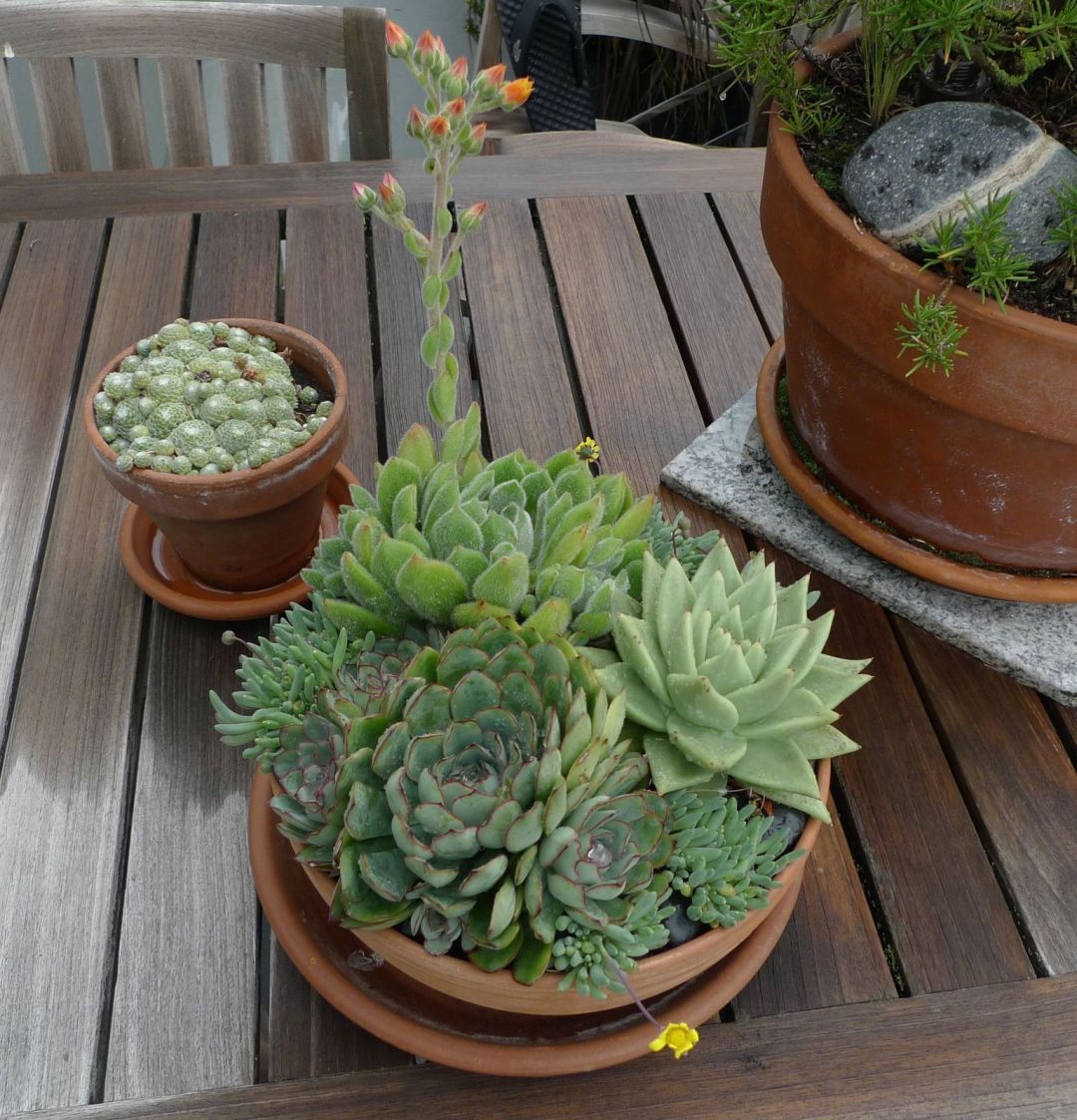Plant a Tabletop Succulent Bowl

Three Echeveria species, interplanted with a fine-textured succulent (front). In back, left, a hens-and-chicks (Sempervivum) with fine, white "cob-webbing".
Image: Kate Bryant
The pot:
Best is to start with a container you already have and pick succulents that will compliment it. Wondering what to do with that beloved old cracked china casserole dish? Have a big, beautiful shell you can’t bear to throw out? Justify its existence by planting something in it. (Just make sure it has – or you can drill – a hole in the bottom, for drainage.) You also might poke around your garage for a nice little pot. If you need to purchase something, trawl thrift shops for something rustic or just buy a wide, shallow bowl of terra cotta or stoneware. The taller the plants, the deeper the bowl should be. And of course, the larger your table, the larger a pot it can accommodate. Really low-growing plants like hens-and-chicks (Sempervivum) can go in very flat pots, trays or shells.
The potting mix:
Use a commercial cactus and succulent mix - or add about ½ the volume of horticultural pumice and a handful of sand to the same amount of commercial potting soil. Resist the tempation to use soil from the garden, as it is usually too heavy for succulents and won’t drain properly.
Tips:
Cut a little square of frost cloth or newspaper to put over the drainage hole of the pot. This minimizes the amount of dirt that flows through the pot onto your table when you water.
No need to add pebbles or rocks to the bottom of the pot – it doesn’t improve drainage and can lodge in drain holes and block them.
Finally, the best part – the plants!
Echeveria are always a favorite for summer planters. The colors are thrilling and the plump rosettes of foliage can be downright fascinating up close. Foliar colors include olive and fresh green, gold, powder blue, and all variety of pink, bronze and burgundy tints. Leaves can be hairy or smooth, with ruffled or wavy edges, often two-toned, and the plants produce copious, and adorably chubby little offsets during the season.
Try three Echeveria in a shallow, eight to 12-inch diameter terra cotta bowl. The Echeveria will fill in quickly and look like they’ve been there for years. Mix and match for an appealing variety of colors and textures. Place smooth pebbles or river rock between them or interplant with a more finely-textured succulents (as in the photo). Echeveria rarely survive our cold, wet winters outdoors so bring the pot indoors in September or October, or just replant in spring.
Another nice tabletop plant is hens-and-chicks (Sempervivum) and its close relative, Jovibarba. These tough, cold-hardy plants make dense, intricately-patterned mats and come in a range of colors and textures. One small plant can fill in a four or six-inch pot in a season. Sempervivum makes wonderful tabletop planter subjects because they are low, flat and intensely textural - great for close-up viewing. Add a few handsome stones to the pot and watch the semps slowly grow around and over them.
Creeping sedums make superb container plants, too. There are even sedums that thrive in shade or part shade. There are hundreds of varieties - visit the Sedum Chicks' website for a list of Sedum, Sempervivum and planting ideas for containers.
